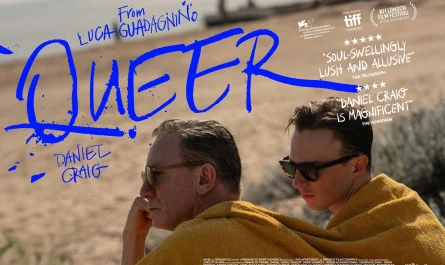Corina is a Mexican movie directed by Urzula Barba Hopfner and written by Urzula Barba Hopfner and Samuel Sosa. Starring Naian González Norvind, Carolina Politi, and Cristo Fernández, the film is divided into three acts. The first act revolves around impulse, ambition, and anxiety. Corina is a 30-year-old woman with agoraphobia, just like her mother, who works at a bureaucratic editorial. She has an ambiguous relationship with her boss, Liliana, a powerful woman. Liliana seems to admire her, but also represses her. Corina has a calculated routine on how to get to work through specific obsessive steps. She stresses out very easily when something out of the ordinary happens, like meeting a new person or having to take a different route in her daily commute. In the second act, silence, rupture, and transformation lead the way. Corina starts questioning the meaning of her routine, so she decides to temporarily isolate herself from her job and habitual environment. Corina usually lies to her mother about her writing, as she has made her believe she is a frequently published author instead of an editor. Her stress and unrest increase when she accidentally sends her version of Xareni Silverman’s book. Corina struggles to communicate herself, often staying silent, even at times of chaos. Although she tried explaining the situation to Liliana, the words never came out of her mouth. This pushed her to embark on a journey to a far-away town, with the help of the new guy in town, Carlos. At this moment, Corina faces solitude, uncertainty, and she starts looking at the world with different eyes. She goes from being a calculated woman who measured everything in her routine to a more contemplative and adventurous truth-seeker.
The final act reassures Corina’s identity through reappearance and empowerment. Corina returns to the city with clarity instead of anxiety. She faces her boss in a moment of tension and reveals the truth about Silverman’s book. She also confronts Liliana, saying she no longer wishes to be pushed to the side. Liliana is angry about the result of Corina’s decisions, but she is also impressed by her writing skills. They sign an agreement where Corina can never reveal the truth about the book to the public, but will start getting better work opportunities. In the end, Corina has grown out of her emotional and overwhelming habits. She no longer belongs in that world and has become a better, more peaceful, and conscious version. The last frame shows Corina crossing a busy street. She doesn’t run, nor look backwards.
Color Changes Through the Film
Color change in “Corina” is a narration tool that explains Corina´s emotional and psychological arc. It also marks key moments in her transformation and identity. The use of color is symbolic and intentional.
At the beginning, Corina’s fashion and her surroundings are accentuated in yellow and red.
· – Emotional meaning: Red and yellow are warm colors, associated with passion, energy, impulse, desire, and danger/urgency. In the first act, Corina is immersed in an intense and impulsive environment. She navigates the city through an urgent need to belong and grow professionally, especially in her desperate attempts to fulfill external expectations.
– Red lamp: During the first act, the red light on her desk is on. This detail can symbolize her alert mood or the constant tension between her personal and professional life.
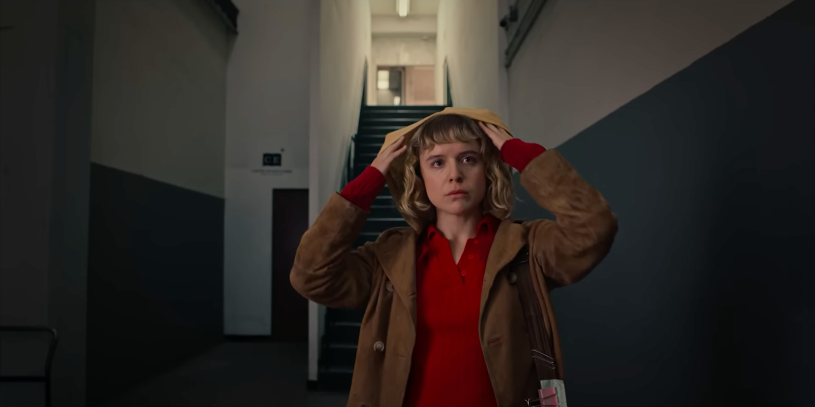

– Corina’s Boss, Liliana: Red represents Liliana as a powerful figure. It communicates authority, control, and leadership. She is a woman who is already in a high position within the system; she is strong, decisive, and imposing. She represents the system itself: a structure in which feminine power exists under certain rules, oftentimes patriarchal and violent, even perpetuated by women. She’s a figure that has conquered space, but has lost spontaneity, softness, or balance.
Her control is disguised as empowerment: Red can also come across as ambiguous or aggressive. She is a cold, hard, and manipulative authority; in this case, red can be not only power, but danger. She also represents what Corina could be if she decides to integrate into the system without questioning it. The future in which power can be achieved, but at a high emotional price.
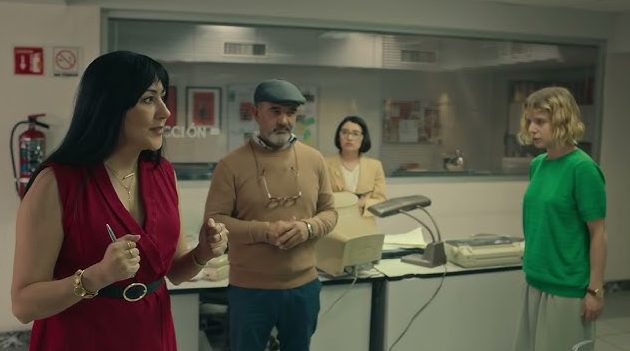
During the second act, the colors around Corina and her fashion fully change. Green is now the predominant color, accompanied by blue details or the characters around her dressed in blue or green, like Carlos or her mother.
– Green and emotion: Green suggests renovation. It is a color between warmth and cold, which suggests a contemplative stage. At this moment, Corina is introspective about her wishes to become a successful writer, yet she is decisive and strategic in her approach. Green expresses her personal growth amidst a calmer environment. She is more observant and reflexive, and she is trying to heal old wounds and discover who she is outside of agoraphobia or her strict routine. It is a pause and a moment of reconfiguration. She is trying to discover who she is away from any conditioning.
– The red light on her desk is off: Her alert mood is shut down. Corina is in a neutral and safe space, and there is no longer urgency or an immediate conflict. It can also mean a disconnect from her previous confused and overwhelmed emotional state.
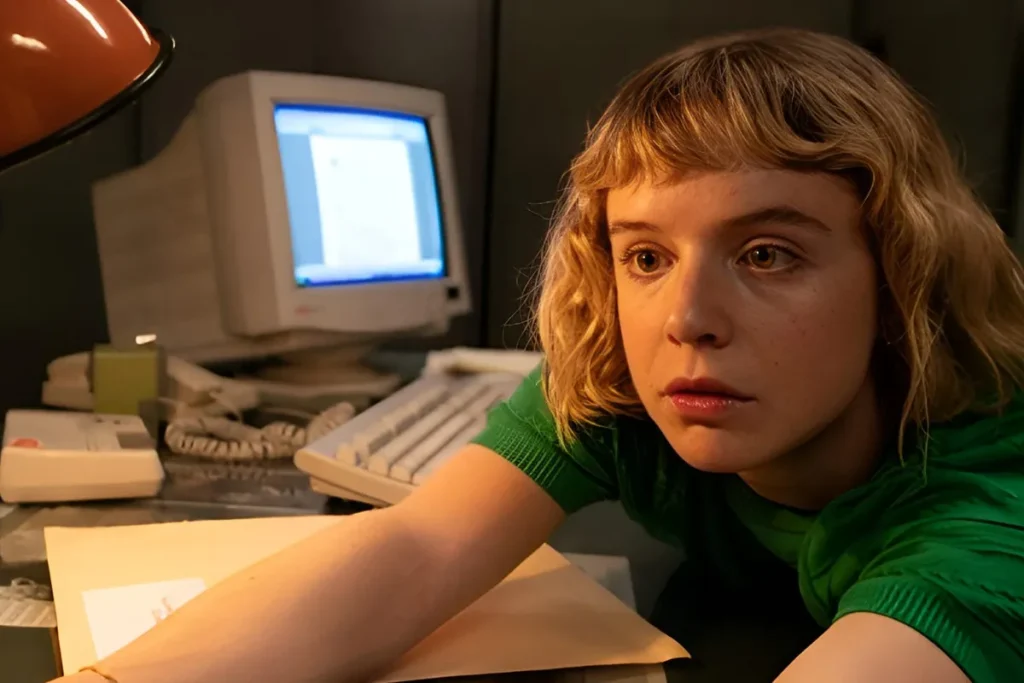
– Carlos and Blue: Carlos is visiting his cousin, and he’s a new element in Corina’s routine. When they first meet, she feels uneasy as he represents a loss of control in her routine. As the film progresses, Corina gets used to Carlos’ presence until the point she asks him for help. He is dressed in blue jeans and a denim jacket for most of the movie. His attire is loaded with symbolism and works as a counterpoint to Corina’s fashion and personality. Blue represents distancing, rationality, and contention.
– His emotions are balanced, and he has self-control.
– There is a rational distancing from emotion.
– He’s not as open to change as Corina, and he’s content and conformed in the way the world works, as opposed to Corina’s restlessness for her world to be different. He doesn’t question his surroundings as much as Corina.
– When he travels with Corina, he is supportive, but also provides limits; he is a functional figure more than a transformative figure.
Carlos’ Denim: Just like his personality, his wardrobe is functional, immutable, and ordinary. It is also a durable and resistant material, often representing the traditional “smart and unproblematic man”. The environment hardly affects denim’s state; in this sense, Carlos’ outfits represent how he listens to Corina, but he is not affected by her emotional turmoil. She changes, he doesn’t. She flows, he doesn’t. She transforms from within; he contains himself. It also symbolizes how he can accompany her through her journey to a certain extent; after that, she must continue her rediscovery path by herself. Perhaps Corina needed a contrast to define herself, not necessarily an opposite partner to stay.
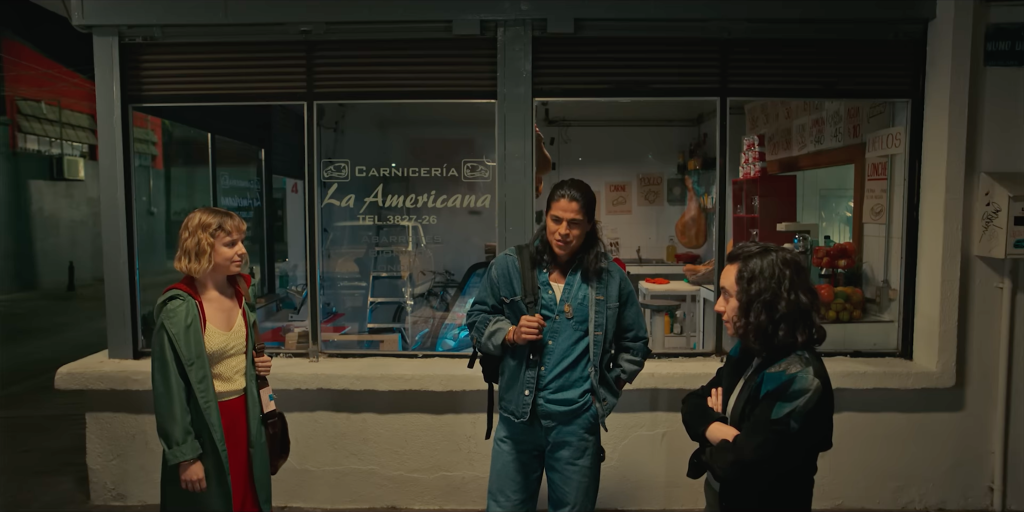
In the final act, Corina has now reaffirmed who she is, what her ambitions are, and what her previous mistakes were and how they affected her, but most importantly, what are the following steps she must take to reach her dreams.
– The return of red and yellow does not inherently mean a return to the initial stage, but rather an integration of the experience. Corina has returned with more clarity and empowerment. She has taken the passionate and vital elements of her personality and aimed them towards a new and more strategic direction. This time, from a new conscience.
– The red light is on again! It can represent active action to assume her place in the world. It’s no longer a warning, but a sign for deliberate decisions. Red signifies determination, even in the face of adversity.
Colors not only show emotions, but rather tell Corina’s journey from being isolated to becoming conscious about everything around her, from impulsive behaviors to deliberate action. The first yellow/red cycle represents an adaptation to the world. The green cycle expresses reflection and the questioning of the world. The last yellow/red cycle is a transformation in the world from her own self.
The use of color has an almost mythological structure: defeat – revelation – success. It allows the viewer to understand the ambiguity that cannot be put into words, rather understood through experience. Corina is no longer a version of what the world expects from her, instead, she became the author of her own story.





